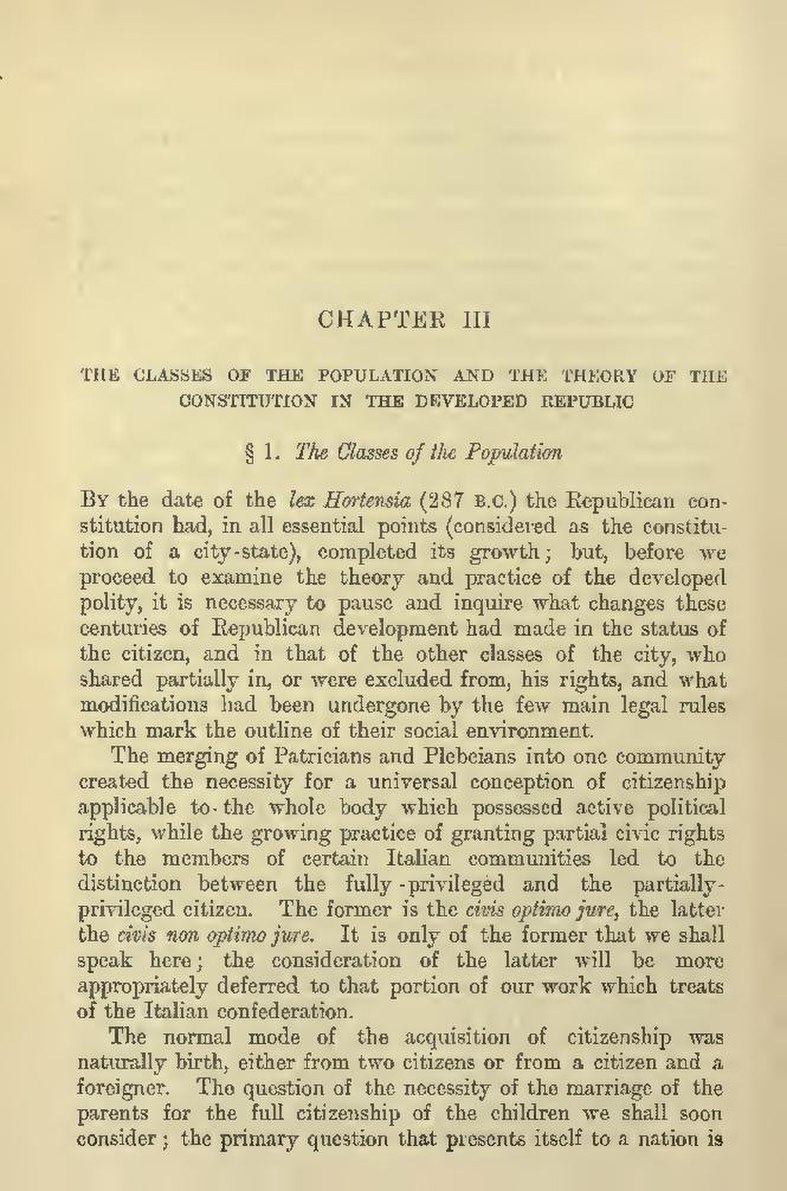CHAPTER III
THE CLASSES OF THE POPULATION AND THE THEORY OF THE CONSTITUTION IN THE DEVELOPED REPUBLIC
§ 1. The Classes of the Population
By the date of the lex Hortensia (287 B.C.) the Republican constitution
had, in all essential points (considered as the constitution
of a city-state), completed its growth; but, before we
proceed to examine the theory and practice of the developed
polity, it is necessary to pause and inquire what changes these
centuries of Republican development had made in the status of
the citizen, and in that of the other classes of the city, who
shared partially in, or were excluded from, his rights, and what
modifications had been undergone by the few main legal rules
which mark the outline of their social environment
The merging of Patricians and Plebeians into one community created the necessity for a universal conception of citizenship applicable to the whole body which possessed active political rights, while the growing practice of granting partial civic rights to the members of certain Italian communities led to the distinction between the fully-privileged and the partially-privileged citizen. The former is the civis optimo jure, the latter the civis non optimo jure. It is only of the former that we shall speak here; the consideration of the latter will be more appropriately deferred to that portion of our work which treats of the Italian confederation.
The normal mode of the acquisition of citizenship was naturally birth, either from two citizens or from a citizen and a foreigner. The question of the necessity of the marriage of the parents for the full citizenship of the children we shall soon consider; the primary question that presents itself to a nation is
